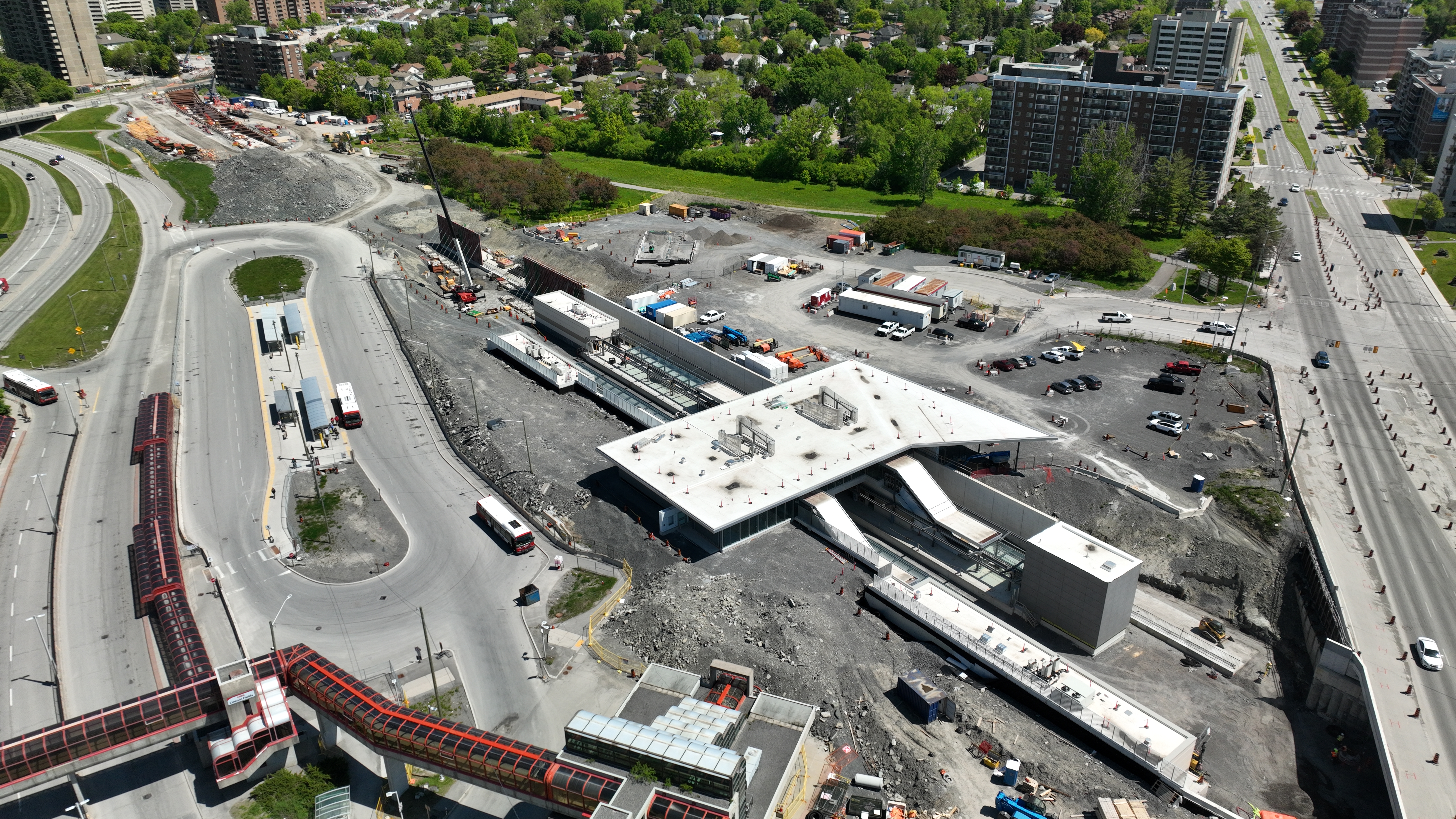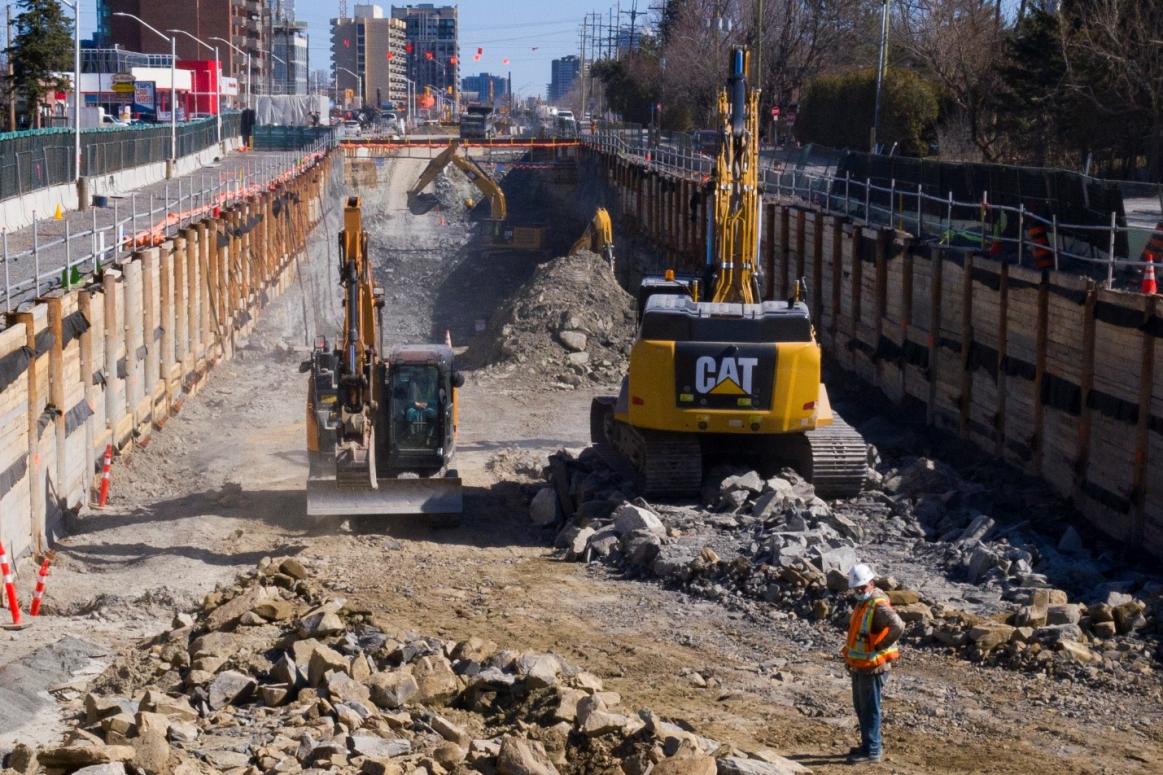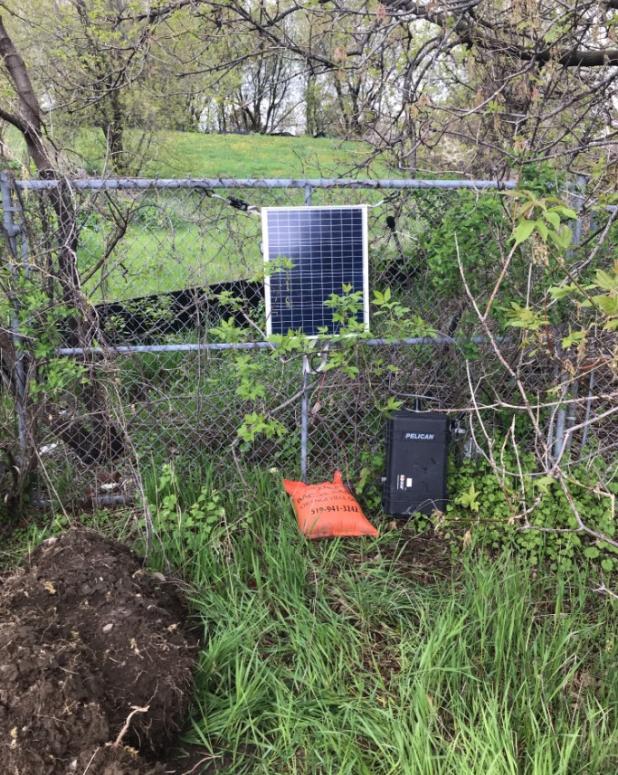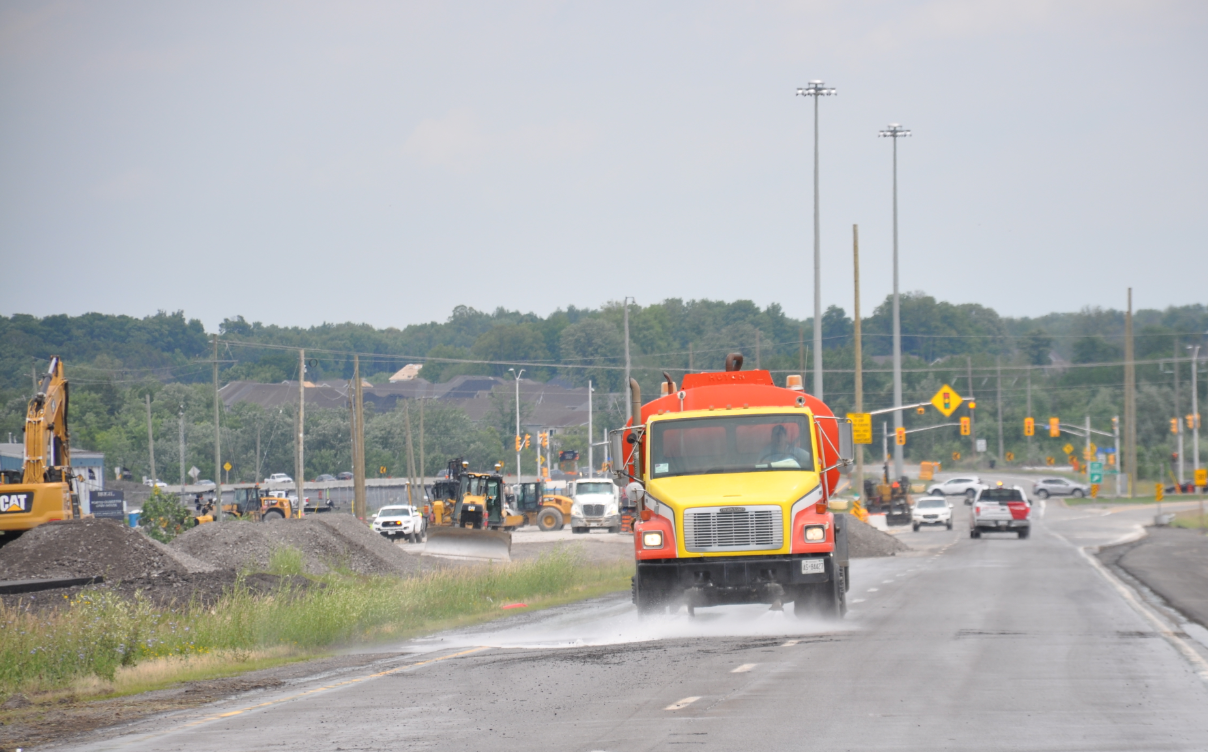Community-centric approach: Managing project impacts and mitigation

The building of all three O-Train extensions is well underway and construction season is full steam ahead. This summer, you will see construction activity transforming our transit system further east, west, and south. By adding 44 km of rail and 24 new O-Train stations, O-Train Extension will bring 77% of Ottawa residents within 5 kilometres of rail.

Byron Corridor
As construction on each of the O-Train line extensions progresses, the constructors work diligently to minimize the direct impacts on stakeholders where possible. This is achieved through active planning, managing, and overseeing of design and construction activities, and mitigating for impacts, such as noise and vibration, dust and dirt, and site lighting required for overnight work.
Most work is typically scheduled during daytime hours however, there are regular and ongoing requirements for night work. When planning a typical project, night work is used to accommodate activities that cannot be done during the day, like road or ramp closures, thus reducing impacts on the travelling public. Throughout the COVID-19 pandemic, effort has been made to rebalance the work to the extent possible, by allowing work to have greater traffic impacts during the day in an effort to reduce noise impacts at night. In addition, some of the more intensive construction activity has significant resource requirements, that requires work to happen day and night in order to meet the schedule. In the south, crews are working extended shifts to take advantage of the summer construction season. This includes the introduction of longer shifts and, at select sites, working 6 to 7 days a week.
Operations such as road realignment, rock excavation, utility relocations and station construction often lead to noise, vibration and other impacts being experienced and felt by communities living close to construction sites. While each alignment is different in nature, the construction activities and impacts experienced by various communities are largely the same. For residents whose property borders the affected construction zone, equipment in the area may cause noise and vibration as the work progresses.
Noise Monitoring and Mitigation
Noise and vibration monitors have been installed in various locations to ensure that disruption does not exceed allowable limits mandated by the City. Limits are set to ensure there is no damage to nearby properties. However, while vibrations and noise may be within those limits, residents may still feel or hear construction activities while underway.
The monitors are continuously observed to track noise and vibration created by construction. If an exceedance occurs, an alert is automatically sent to the site and work is stopped to investigate the source of the exceedance and implement corrective measures, if necessary.
When data is received, the constructor’s Environmental and Operations teams work together to ensure that contract requirements are met, but more importantly that any complaints from the public are acknowledged and addressed.
The following are some of the mitigation measures the constructor has adopted to reduce noise:
- The constructor’s equipment fleet is well-maintained, in order to limit noise levels.
- The majority of equipment in the field, including pick-up trucks, dump trucks and other construction vehicles are required to be equipped with broadband back-up white noise alarms.
- Workers and sub-contractors are trained and consistently reminded to be good neighbours when working on-site by not slamming tailgates, not idling vehicles and to avoid shouting or yelling when working.
- All trucking companies are mindful of the door slamming and tailgate-banging concerns that can be created and are conducting awareness training with their drivers working at construction sites.
- Use of equipment like vac trucks, required to locate utilities and excavators, and activities like hoe-ramming, roller compacting, and guardrail installation are primarily completed during daytime hours, when possible.
- Light plants, generators and compressors are placed onsite and as far away from neighbouring homes to the extent possible. Acoustic noise barriers are affixed to fencing used to enclose equipment operating overnight (i.e. pumps and generators) located near residential homes.
- Temporary noise or visual barriers are constructed along construction zones to protect adjacent land users from noise pollution.
- City communications staff provide regular project information through newsletters, online articles, video, social media updates and public notices. Where overnight work is required, advance notice is provided via public notices distributed by-hand and to email subscribers.
- Together, the City and the constructor respond quickly to public inquires or complaints. Each complaint is investigated, tracked, reported on, and responded to.

Noise Monitor
Dust and Dirt
Dry, loose dirt can be picked up in the wind and gets tossed around by heavy equipment. As such, the constructor uses water and other dust suppressants, where practical, to keep dust down and help the dirt stay put.
At sites where the constructor is working for longer periods of time and where fencing is required, mesh screens or noise barriers are affixed to it. While the fencing does not prevent dust, it helps contain it onsite. The constructor also ensures that street sweepers clean adjacent roadways and ramps regularly from trucks leaving sites.

Street sweeping truck
Mobility
All pedestrian, cycling, bus, and vehicular movements will generally be maintained during construction, though sometimes highway ramps, lanes, roads, transitway and sidewalk closures are necessary. While closures are in place, safe routes are maintained for all commuters and communicated through signage, notices via newsletter and website, and social media. Pedestrians and cyclists should use extra caution when localized detours are in place and follow signage or directions from flag persons when present. Motorists should adhere to detours, traffic control signage and allow for added travel time when moving through active construction corridors. When multi-use pathway (MUP) detours have been implemented to allow for safe passage around construction activity, they have been designed to meet the City’s standards for safety, security and accessibility.
Questions or comments
Residents concerned about vibrations, noise, dust, and/or mobility issues are encouraged to contact the O-Train Extension team by emailing Stage2@ottawa.ca or by calling Service Ottawa at 3-1-1, emailing 311@ottawa.ca.
Was this information helpful? Let us know by emailing Stage2@ottawa.ca.
Stay up to date with O-Train Extension progress by signing up for the O-Train Extension newsletter.

